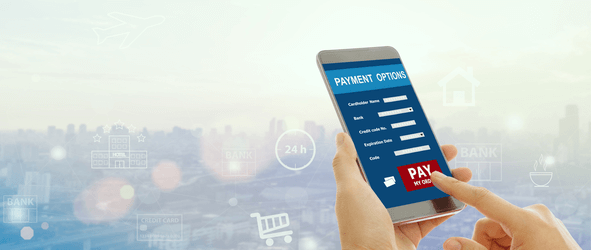Did the pandemic change the way you paid your bills? If it did, you aren’t alone.
- More than 16% of consumers are using digital channels more often to pay bills since the pandemic began.
- People who prefer digital statements rose to more than 48% compared to 44% the previous year.
- The digital channels they use are multiplying.
- Most people use three or more digital and physical methods to pay their monthly bills.[1]
The health crisis accelerated trends in communications and payments that were already in motion. Consumers increasingly expect convenience, speed, simplicity and choice in billing and payments.
There is no such thing as a single customer journey. However, interactions that are convenient, easy, and fast vary for different people.
You can satisfy this thirst for omnichannel flexibility with a consumer-centric approach that caters to all while also prioritizing secure digital and mobile billing and payment experiences. Electronic communications and payments are not only growing more popular with consumers, but they are more cost-effective and accelerate payments for billers.
Here’s where to focus:
Upgrade biller websites
In recent years, consumers have increasingly switched from bank bill pay to biller direct websites. But a standalone portal with only basic payment functionality no longer measures up to what consumers want.
Electronic bill presentment and payments (EBPP) has become central to the billing experience. Key self-service account management features include:
- Access to current and past statements and other correspondence
- Lots of payment methods, including ACH, credit/debit cards, and IVR (phone-based)
- Self-service payment plan options (rules-driven or one-size) especially for healthcare and collections
- Ability to set up automated, recurring payments
Nordis’ ExpressoPay® system offers these features and more, through a variety of configuration options including branded portal, single sign-on (SSO) or by tapping into our APIs for billers who prefer to host and manage their own payment UI.
And ExpressoPay is PCI Level One compliant, reducing the compliance burden for clients that elect to outsource biller direct payments.
Join the mobile revolution
Contactless and mobile messaging and payments took off during the COVID-19 crisis, and you don’t have to be a restaurant or retailer to take advantage of these trends. Apple Pay, Samsung Pay, Google Pay, and PayPal let people input their credit/debit card information and pay online bills using their smartphones. Apple Pay works on iPads and Apple watches, too.
Mobile wallets native to smartphones also allow consumers to add credit and debit card information for easy mobile payments. Nordis’ ExpressoWallet® goes several steps further, enabling clients to deliver e-statements directly into the native mobile wallet application present on virtually all modern smartphones, lighting up the phone with push notifications upon arrival, and include links for convenient access to payment portals. Users can pay their bills with just two taps.
With consumers swiping or tapping their phones more than 2,600 times a day, texting is a must-have customer experience. With SMS/texting from Nordis, you can offer a range of text messages that improve CX including:
- Automated texts of account balance and payment due date
- Payment reminders with a link to their e-statement or payment options
- Missed payment reminders
- Confirmation of payment
- A call center link to facilitate a callback, particularly helpful in the collections industry
Innovate with advanced bank bill pay
There’s a reason online bank bill payment hasn’t grown in popularity in recent years: Most systems are clunky and slow, and they’re error-prone because they rely on users to enter critical data required by the financial institution and biller to reconcile your account.
Mastercard Bill Pay Exchange™ is reinvigorating bank bill pay by adding real-time messaging and payment capabilities, transparency, consistency and simplicity to an overlooked channel. In short, it brings many of the advantages of biller direct payments to the bank bill pay experience via web or mobile app.
Mastercard’s Bill Pay Exchange bill presentment utilizes Nordis’ Expresso® platform and informs consumers of their bill summary and can present a detailed PDF of the bill directly in the bank bill pay UI. Payment methods will soon include real-time payment via bank account, and credit, debit and prepaid cards for those billers that elect to accept these alternative payment forms. Real-time messaging eliminates customer inquiries around transparency and payment confirmations, which typically cost companies $5 – $10 per call. Gartner says self-service channels such as websites and mobile apps bring the cost down to 10 cents per contact.
Personalize communications and payments
The demand for tailored communications delivered via the consumer’s preferred channel is at an all-time high, according to 2020 IDC research on cloud-based communication services.
We can attest to the growth in our clients’ tracking of and adherence to their customers’ communications and billing preferences. There is a steady progression in opting-in to email, text and mobile app communications and alerts by their customers, with some clients creating awareness campaigns to promote the benefits.
According to InfoTrends, 32% of organizations say improving CX is extremely important to their transactional communications strategy. Let us show you how to grow your omnichannel communications, billing and payments capabilities to meet your customers’ preferences for faster, more digital experiences. After a needs assessment, you could be up and running with new digital communications and payments channels in as little as 90-120 days.
To learn more, please contact us.
[1] ACI Speedpay Pulse 2020
